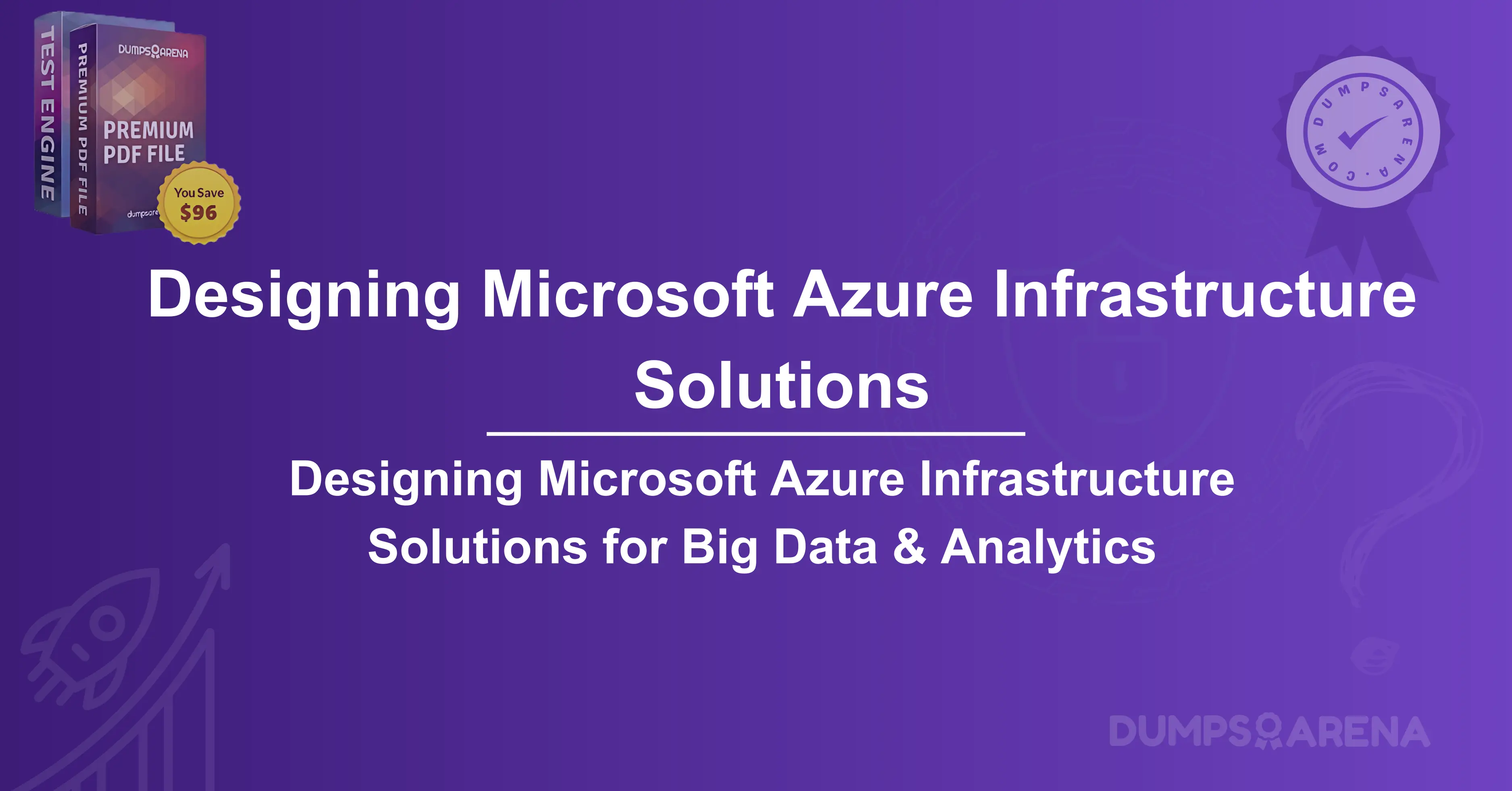Introduction to Microsoft Azure Infrastructure Solutions
Microsoft Azure is a leading cloud computing platform that provides a wide range of infrastructure services, including computing, storage, networking, and security. Designing an effective Azure infrastructure requires a deep understanding of cloud architecture principles, business requirements, and best practices for performance, security, and cost efficiency.
This guide explores the key aspects of designing Microsoft Azure infrastructure solutions, covering essential components, scalability, security, hybrid cloud strategies, cost management, and real-world implementations.
2. Key Components of Azure Infrastructure
A. Virtual Machines (VMs)
Azure Virtual Machines (VMs) provide scalable computing resources in the cloud. Key considerations when designing VM-based solutions include:
- VM Sizing: Choosing the right VM series (General Purpose, Memory-Optimized, Compute-Optimized).
- Operating System: Windows vs. Linux VMs.
- Managed Disks: Using Azure Managed Disks for better reliability.
- Custom Images: Creating and deploying custom VM images.
B. Azure Virtual Networks (VNet)
Azure Virtual Networks enable secure communication between Azure resources. Design considerations include:
- Subnet Design: Segmenting networks for security (e.g., frontend, backend, DMZ).
- IP Addressing: Public vs. Private IP allocation.
- Peering: Connecting multiple VNets for hybrid scenarios.
C. Azure Storage Solutions
Azure offers multiple storage options:
- Blob Storage: For unstructured data (e.g., media files).
- Azure Files: Managed file shares.
- Disk Storage: For VM persistent storage.
- Azure Data Lake: For big data analytics.
D. Azure Load Balancers and Traffic Management
- Azure Load Balancer: Distributes traffic across VMs.
- Application Gateway: Layer 7 load balancing for web apps.
- Traffic Manager: Global DNS-based traffic routing.
E. Azure Active Directory (AD) and Identity Management
- Single Sign-On (SSO): Integrating with enterprise identity providers.
- Role-Based Access Control (RBAC): Managing permissions.
- Multi-Factor Authentication (MFA): Enhancing security.
3. Designing for Scalability and High Availability
A. Availability Sets and Availability Zones
- Availability Sets: Protect against hardware failures within a data center.
- Availability Zones: Protect against data center outages (geographically separate locations).
B. Azure Autoscaling
- VM Scale Sets: Automatically adjust VM instances based on demand.
- Horizontal vs. Vertical Scaling: Choosing the right scaling strategy.
C. Disaster Recovery and Backup Solutions
- Azure Site Recovery (ASR): Automates failover during outages.
- Azure Backup: Protects against data loss.
4. Security and Compliance in Azure
A. Network Security Groups (NSGs) and Azure Firewall
- NSGs: Filter traffic at the subnet/VM level.
- Azure Firewall: Protects against threats with application-level rules.
B. Azure Security Center and Defender for Cloud
- Threat Detection: Identifies vulnerabilities.
- Security Policies: Enforces compliance.
C. Compliance Standards (GDPR, HIPAA, ISO)
- Azure Compliance Offerings: Certifications for regulated industries.
5. Hybrid Cloud and Multi-Cloud Strategies
A. Azure Arc
- Manage on-premises and multi-cloud resources from Azure.
B. Azure Stack Hub
- Extend Azure services to private data centers.
C. Connecting On-Premises to Azure
- ExpressRoute: Private, high-speed connection.
- VPN Gateway: Secure site-to-site connectivity.
6. Cost Optimization and Management
A. Azure Pricing Models
- Pay-as-you-go vs. Reserved Instances.
B. Azure Cost Management and Billing
- Monitor and optimize cloud spending.
C. Reserved Instances and Spot VMs
- Save costs with long-term commitments.
7. Monitoring and Performance Optimization
A. Azure Monitor and Log Analytics
- Track performance metrics and logs.
B. Application Performance Monitoring (APM)
- Azure Application Insights for real-time monitoring.
C. Best Practices for Performance Tuning
- Caching (Azure Redis Cache).
- Content Delivery Networks (Azure CDN).
8. Case Studies and Real-World Implementations
A. Enterprise Cloud Migration
- Lift-and-shift vs. cloud-native DumpsArena approaches.
B. DevOps and CI/CD on Azure
- Azure DevOps for automated deployments.
C. IoT and Big Data Solutions
- Azure IoT Hub and HDInsight for data processing.
9. Future Trends in Azure Infrastructure
A. AI and Machine Learning Integration
- Azure Machine Learning for predictive analytics.
B. Serverless Computing (Azure Functions)
- Event-driven, scalable applications.
C. Edge Computing with Azure IoT Edge
- Process data closer to the source.
10. Conclusion and Best Practices
Designing Microsoft Azure infrastructure solutions requires a balance of performance, security, scalability, and cost efficiency. By following best practices—such as leveraging Availability Zones, implementing robust security policies, and optimizing costs—organizations can build resilient and future-proof cloud architectures.
Get Accurate & Authentic 500+Sample Questions & Answer: Designing Microsoft Azure Infrastructure Solutions
1. Which Azure service should you recommend for a globally distributed application that requires low-latency read access to cached data?
A) Azure SQL Database
B) Azure Blob Storage
C) Azure Cache for Redis
D) Azure Table Storage
Explanation: Azure Cache for Redis provides high-performance, low-latency caching for distributed applications, improving read-heavy workloads.
2. When designing a highly available web application across multiple regions, which Azure service ensures traffic distribution?
A) Azure VPN Gateway
B) Azure Traffic Manager
C) Azure Load Balancer
D) Azure Application Gateway
Explanation: Azure Traffic Manager is a DNS-based global load balancer that routes traffic across regions for high availability.
3. Which storage solution is best for storing unstructured data like logs and backups with cost efficiency?
A) Azure Files
B) Azure Blob Storage (Cool Tier)
C) Azure Managed Disks
D) Azure Data Lake Storage
Explanation: Azure Blob Storage Cool Tier is optimized for infrequently accessed, unstructured data (e.g., logs, backups) at a lower cost.
4. For a lift-and-shift migration of on-premises VMs to Azure with minimal changes, which compute option is most suitable?
A) Azure App Service
B) Azure Virtual Machines
C) Azure Kubernetes Service (AKS)
D) Azure Container Instances
Explanation: Azure VMs provide the closest match to on-premises servers, requiring no application redesign.
5. Which Azure networking feature provides private, low-latency connectivity between Azure and an on-premises data center?
A) Azure Public IP
B) Azure ExpressRoute
C) Azure VPN Gateway
D) Azure Front Door



